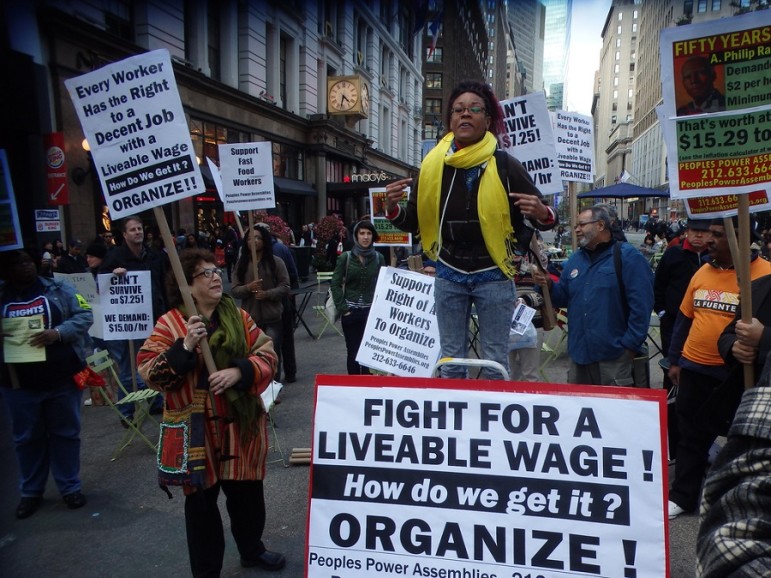
December 10, 2015; Public News Service
Across the State, nonprofits are struggling to maintain a highly skilled and dedicated workforce. Low-wages and increasingly demanding jobs create difficultly in recruitment and retention of human services workers. In 2014, Council of Family and Child Caring Agencies (COFCCA), a statewide membership organization, released a report examining turnover rates in child welfare and childcare organizations. The average annual turnover rate for both types of organizations was over 30 percent…these trends run parallel throughout the entire sector.
New York’s human services nonprofits employ 200,000 workers in day-care centers, senior centers, homeless shelters, and similar efforts, and half of them make less than $15 per hour, or $31,000 per year. A third of the 200,000 make less than $10.50/hour, which translates to around $21,840 per year. A household with one adult and one child living in Buffalo would have to make $51,696 in annual income to meet their basic needs; in the New York City metro area, the income would need to be in the area of $78,476.
A coalition of advocacy groups led by the Federation of Protestant Welfare Agencies, the Fiscal Policy Institute, and the Human Services Council are leading an effort to have state-funded nonprofits pay workers at least $15/hour. The request is backed up by a report, “A Fair Wage for Human Service Workers,” released this month. The report points out:
- Despite being a highly skilled workforce, the human services sector has one of the highest prevalence of low wages in the private sector, behind food service and retail.
- Women make up 82 percent of the statewide workforce, and people of color account for 50 percent of human services workers in the state.
- Human services workers are highly educated, with two-thirds of workers having some college education and close to half holding bachelor’s degrees or higher.
Allison Sesso, director of the Human Services Council, says the low wages stem from government driving those salary levels down: “Ninety-percent-plus of the nonprofits’ budgets come from contracts and fees with government.” Sesso also thinks that the predominance of women in the nonprofit workforce affects wages. “The work is not valued the same as work in a financial institution, which has traditionally been male-led work,” she says. “I think that is part of the reason why this work doesn’t pay as well.”
As readers may recall, Gov. Andrew Cuomo raised the minimum wage for fast-food employees to $15 an hour, and he has declared that said the minimum wage for all state workers would also be raised.
Sign up for our free newsletters
Subscribe to NPQ's newsletters to have our top stories delivered directly to your inbox.
By signing up, you agree to our privacy policy and terms of use, and to receive messages from NPQ and our partners.
Sesso believes that now is the time to make this demand. “I do hope that there is a tide turning and there’s more conversation about this and more of a recognition of a need to increase the floor,” she says. “The fast-food workers really led the way, and we’re following straight behind them.”
Cuomo does not need a new law to make the change. “He can take action on his own,” said Jennifer Jones Austin, a leader of the new wage push. “We’d like to see this in the governor’s State of the State [speech in January].”
Still, this could lead to inequities within agencies, because the same groups are not yet calling for a $15 minimum for nonprofit employees working in jobs under New York City contracts. There are at least 30,000 such workers, according to Carol Kellermann, president of the Citizens Budget Commission. Mayor de Blasio recently raised the minimum wage at city-funded nonprofits to $11.50 an hour for workers, but that is a far cry from $15.
Kellermann says the costs of an increase to $15 would be substantial. The number of employees of nonprofit human service agencies under city contract is between 40,000 to 50,000 at a cost of $1.5 billion, according to a report from the coalition. About half of them are estimated to make less than $15 an hour.
A six-year phase-in is being proposed, and would cost the state about $60 million to $70 million in just its first year and $250 million to $300 million in subsequent years.—Ruth McCambridge











